The empty truck, with driver and a full fuel tank, tipped the scales at 4980 pounds. When we added the camper, with full L.P. and water tanks, the weight rose to 6160, meaning that the camper, wet, came in at 1180, well under the 1800-pound payload. However, the doorjamb sticker said "GVWR 5600 pounds." We were already 560 pounds over the Gross Vehicle Weight Rating without any toys, food, or clothes.
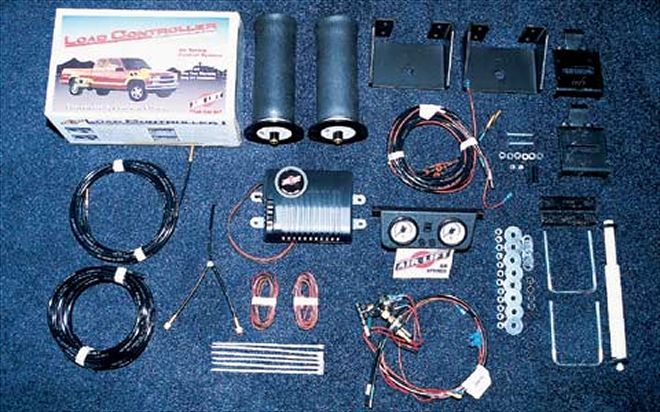 | The complete Load Controller II kit included all hoses, fittings, a wiring harness, a compact 12-volt air compressor, two Air Lift airbags with brackets, twin pressure gauges with control buttons, and detailed instructions.
People tend to misinterpret the "available payload" rating advertised by manufacturers. When we saw the 1800-pound limit, we failed to think about the obvious: fuel, driver, and extras like a bedliner, heavy-duty bumper, winch--even the owner's manual in the glovebox. Bottom line: The truck's rearend squatted. What now?
We didn't want to add heavier springs. That would destroy the comfortable ride when the truck was empty, and we didn't plan on carrying the camper or pulling a trailer all the time. As we suspect that many compact-truck owners have been disappointed to discover, the size of the bed doesn't relate to the real load capacity.
We took our problem to Trucksmart in Rockland, California, and the company suggested Air Lift's Load Controller II. Unlike additional steel or solid rubber helper springs, airbags can be adjusted for many changing conditions, and since the frame is sitting on a cushion of air, the ride is relatively soft.
The complete Load Controller II kit included all hoses, fittings, a wiring harness, a compact 12-volt air compressor, two Air Lift airbags with brackets, twin pressure gauges with control buttons, and detailed instructions. A special tool is provided to help locate the correct height and placement of the airbag brackets. Air Lift suggests a three-hour installation time. While the procedure wasn't overly complicated, we were glad we had professionals do the job.
| The complete Load Controller II kit included all hoses, fittings, a wiring harness, a compact 12-volt air compressor, two Air Lift airbags with brackets, twin pressure gauges with control buttons, and detailed instructions.
People tend to misinterpret the "available payload" rating advertised by manufacturers. When we saw the 1800-pound limit, we failed to think about the obvious: fuel, driver, and extras like a bedliner, heavy-duty bumper, winch--even the owner's manual in the glovebox. Bottom line: The truck's rearend squatted. What now?
We didn't want to add heavier springs. That would destroy the comfortable ride when the truck was empty, and we didn't plan on carrying the camper or pulling a trailer all the time. As we suspect that many compact-truck owners have been disappointed to discover, the size of the bed doesn't relate to the real load capacity.
We took our problem to Trucksmart in Rockland, California, and the company suggested Air Lift's Load Controller II. Unlike additional steel or solid rubber helper springs, airbags can be adjusted for many changing conditions, and since the frame is sitting on a cushion of air, the ride is relatively soft.
The complete Load Controller II kit included all hoses, fittings, a wiring harness, a compact 12-volt air compressor, two Air Lift airbags with brackets, twin pressure gauges with control buttons, and detailed instructions. A special tool is provided to help locate the correct height and placement of the airbag brackets. Air Lift suggests a three-hour installation time. While the procedure wasn't overly complicated, we were glad we had professionals do the job.
Taking measurements before and after, it was evident that the Air Lift system raised the rear edge of the bumper almost three inches. After a test drive, the little Dakota displayed no rear-end sag. Sway and body roll were diminished, and the ride remained as smooth as before, and, as we'd hoped, the annoying headlight misalignment was gone.
Over the past year, we've carried a load of topsoil for the garden, a pallet of bricks for the patio, and have even done some backroad exploring in Baja California. When the camper or other load is removed, we simply push a button and return the bags to neutral. Air Lift says the kit has up to 2000 pounds of leveling capacity.
Air Lift's Load Controller II has a manufacturer's suggested price of $253, and installation at a qualified shop will cost about $125. The system carries a one-year limited warranty.
A Warning
Air Lift recommends to pay close attention to the manufacturer GVW and payload ratings. The Load Controller II is a leveling device and doesn't change the capacities of brakes, tires, frames, or other factory-engineered components. That said, other professionals we spoke to agreed that all factors must be considered, and if a vehicle like the Dodge Dakota is to be used to its fullest capabilities, an airbag-suspension-helper system is a good choice. If you're exceeding your vehicle's GVWR, with or without suspension modifications, you must drive accordingly. Allow extra room to brake, and don't expect it to handle like an empty truck. --G.W.
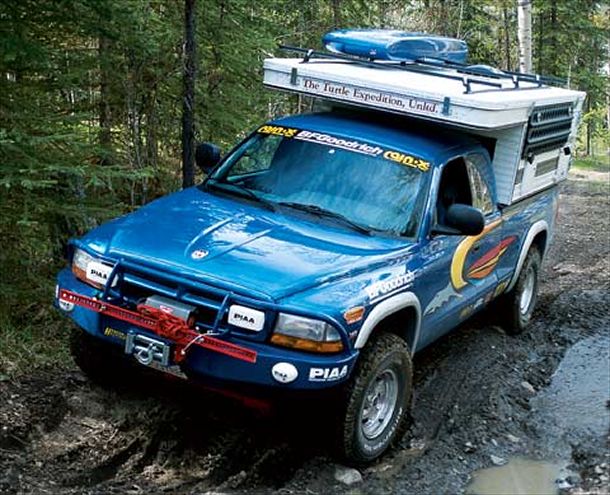 | 163 0404 Lift02 Z
| 163 0404 Lift02 Z
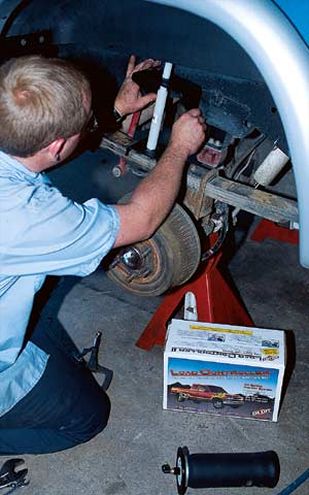 | 163 0404 Lift04 Z
| 163 0404 Lift04 Z
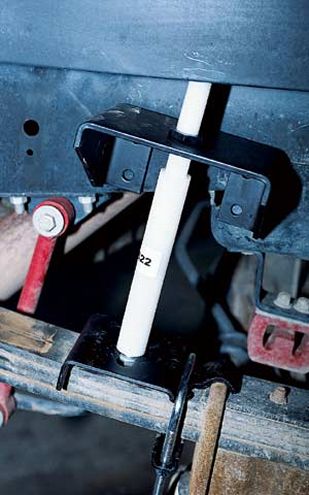 | 163 0404 Lift05 Z
| 163 0404 Lift05 Z
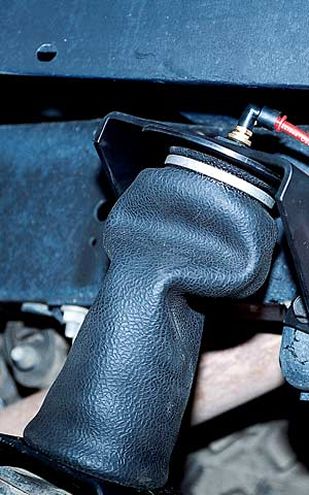 | 163 0404 Lift06 Z
| 163 0404 Lift06 Z
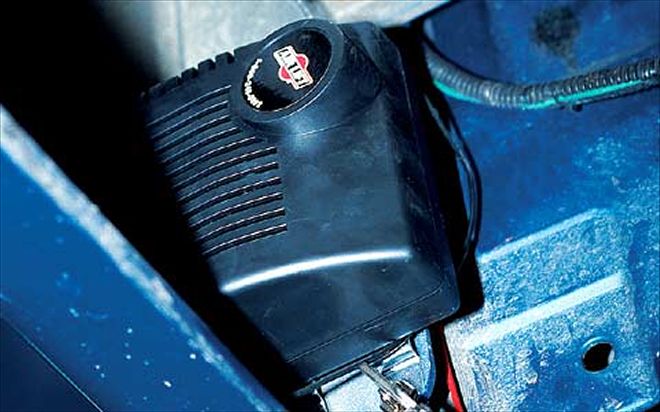 | A special tool is provided to help locate the correct height and placement of the airbag brackets. With the airbags installed on the frame and axle brackets, air lines were routed to the compressor.
| A special tool is provided to help locate the correct height and placement of the airbag brackets. With the airbags installed on the frame and axle brackets, air lines were routed to the compressor.
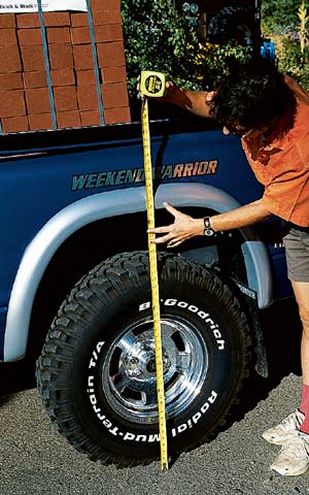 | 163 0404 Lift09 Z
| 163 0404 Lift09 Z